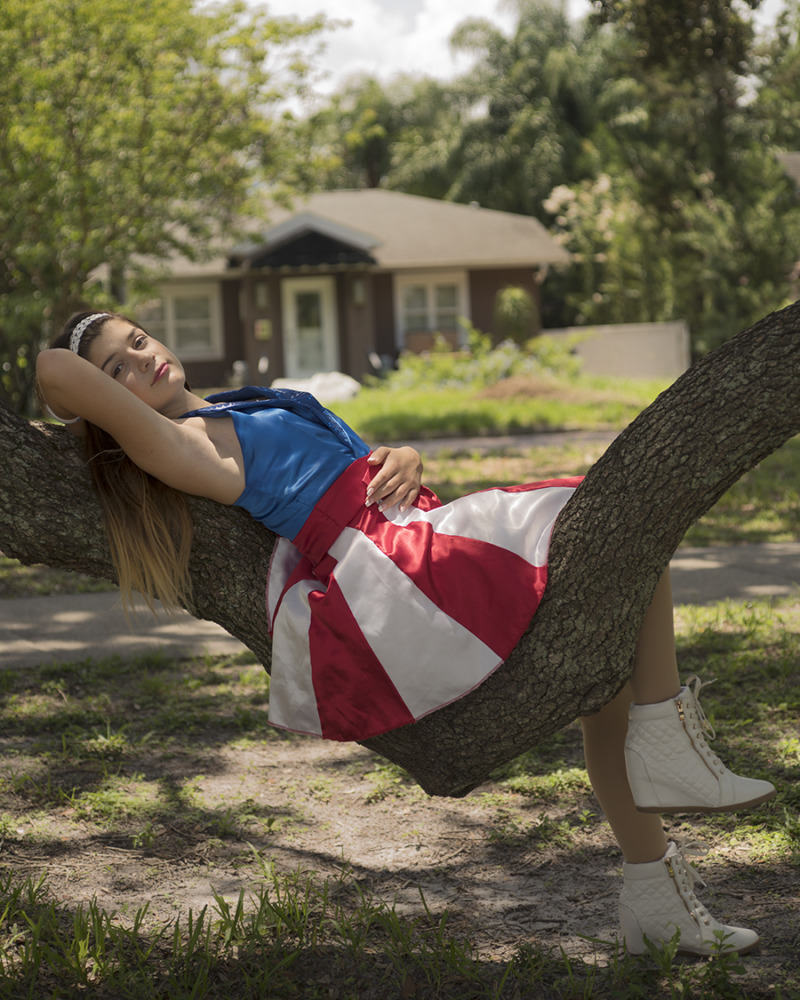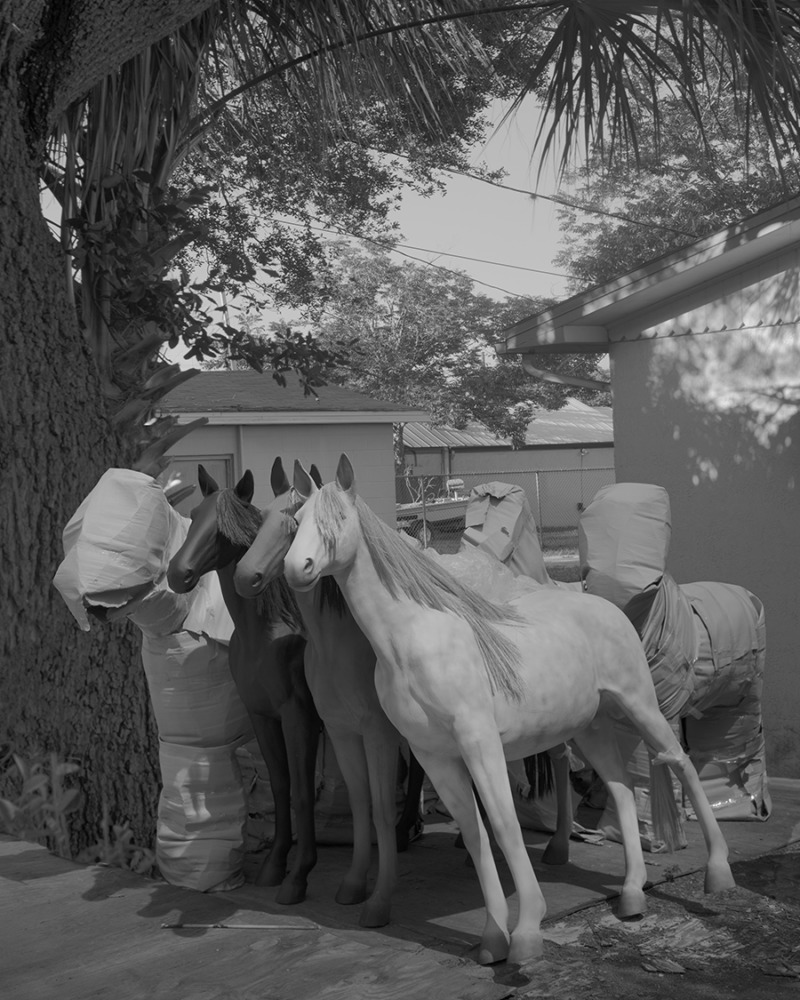Joshua Lutz – Mind The Gap
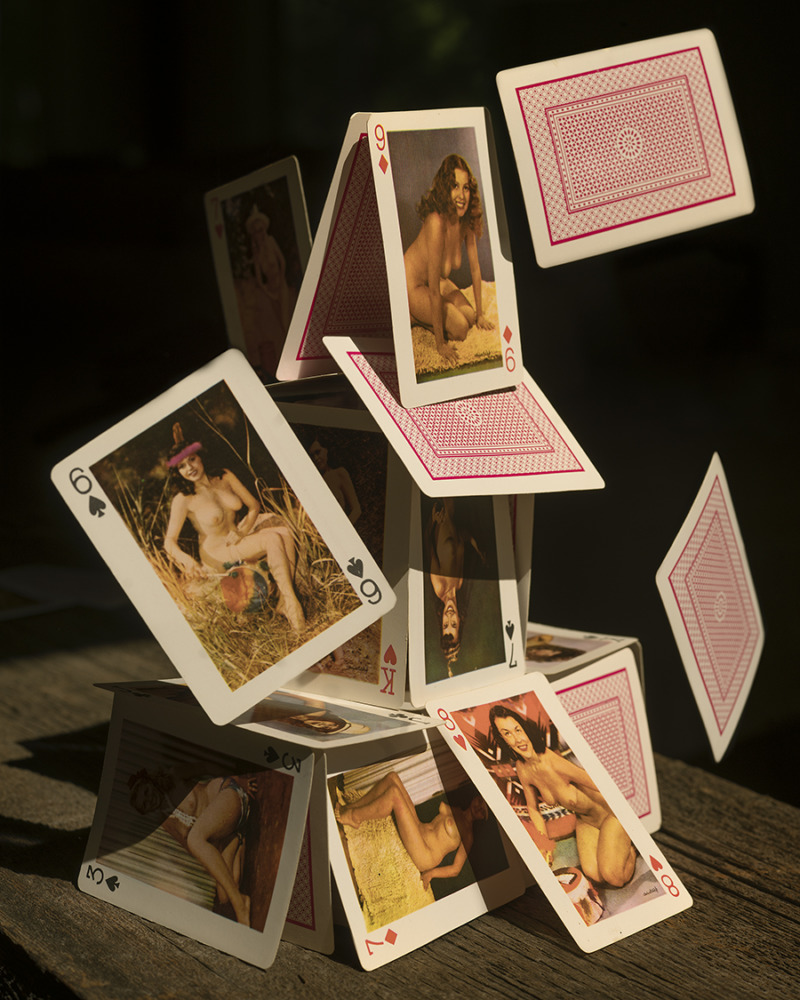
The postmodern subject is a schizophrenic one. At least, that’s the characterisation of cultural theorists Gilles Deleuze and Félix Guattari, who between their books A Thousand Plateaus and Anti-Oedipus, set out the schizophrenic as a product of – and yet against – the instrumentalising flows of capital: against economy and reduction, against risk and reward; “For what is the schizo, if not first of all the one who can no longer bear “all that”: money, the stock market, the death forces”. But how does this theory square with reality?
Joshua Lutz, photographer and educator, evokes the schizophrenic experience in his latest photobook Mind the Gap (Schilt Publishing, 2018). The book is split between mundane images of American suburban life and eclectic, poetic texts; between monochrome and colour; between “two worlds vying for my attention at all times…”, as Lutz writes in the introduction. “In one of them” he continues, “this diagnosis has metastasized to the brain and I am no longer able to care for my children … In the other world, noise shuts down for a split second and the smallest fragment of light becomes a pathway to immortality.”
Already, there’s a sense that any stable foundation of truth will be impossible to find. The narrator of these images is unreliable and liable to change their mind, or perhaps the result of multiple minds, and anyway, a photograph cannot prove anything at all, it can only have truth applied to it in a rather haphazard fashion, opening itself up to multiple contradictory truths. Yet it is precisely this rootlessness, this instability of meaning, that Deleuze and Guattari value. Their process of ‘schizoanalysis’, intended to replace the scientific reason of psychoanalysis, does not seek to explain images with reductive statements, but to “work towards its complexification, its processual enrichment”. With this in mind, it’s worth thinking of gaps not as absences that lack meaning, but as points of potential development.
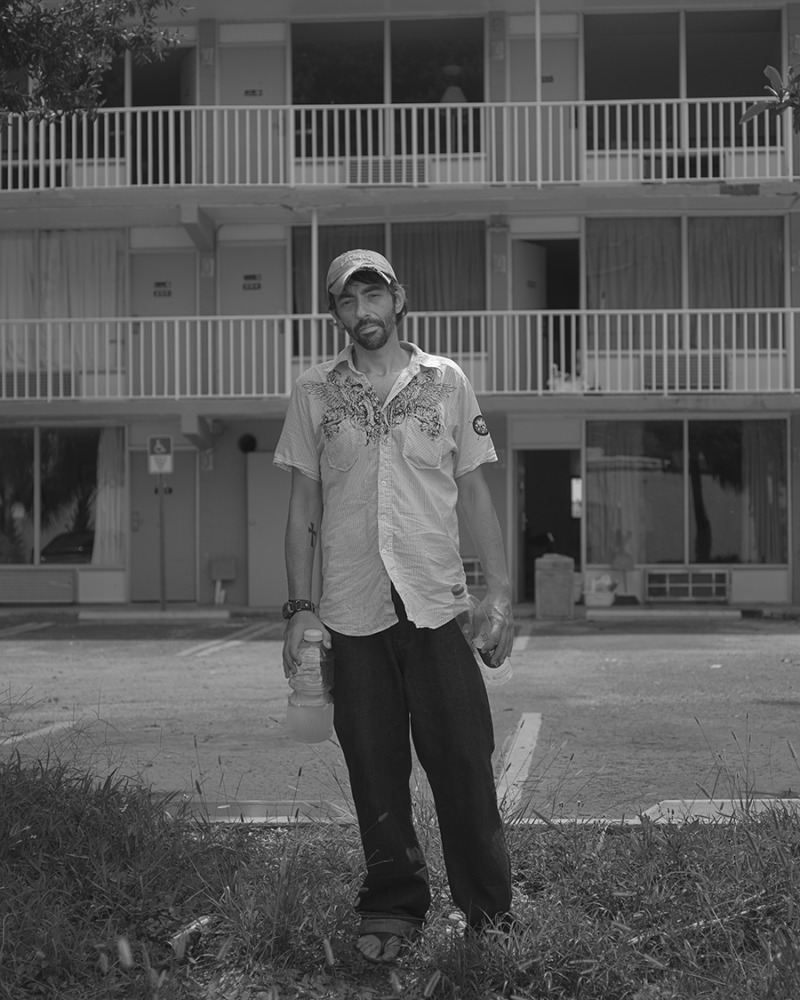
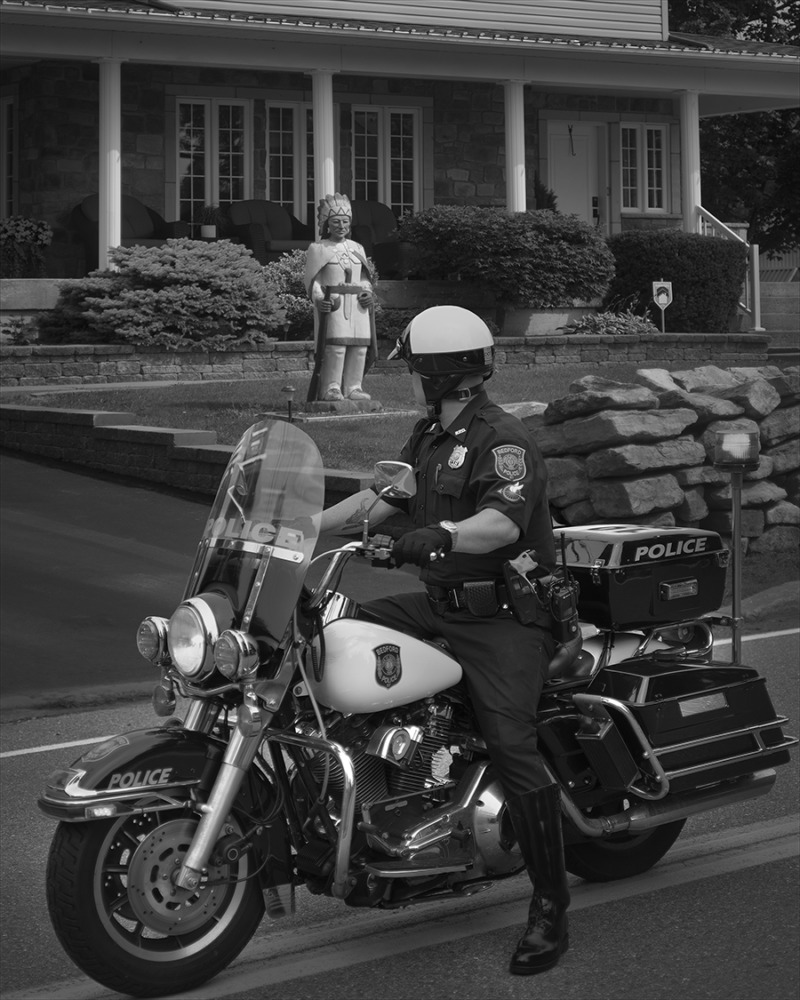
Gaps pervade the book, some more literal than others. The images are sparse, one to a page, constrained from the edges by a wide white border. The text that accompanies the images seems to recede into the paper the type is so small. The design is a little conservative, and there’s no set pattern to the work (even these guidelines are sometimes broken), however, in general, each image sits alone, each a small tightly cropped scene, each combining qualities of so many genres that strict differentiation would make little sense. Within the pictures there are no discernable events, some are even quite boring, displaying little flair or originality; taken individually they wouldn’t be interesting but within the leaves of this book, they allow me to become an analyst to build up stories or case histories.
Here is one version of events (one more expressive and violent than other more mundane readings). The photographer dreams of filicide, a bearded man holds a child’s hand in his mouth, intending to consume it. Machines are capable of thought and speech, an LED traffic sign announces ‘conscious found’. Fear of physical injury is always present; the worn-down thumb of a physical labourer is sliced through the nail and bleeds slow, thick blood. In another image, a person arriving home from a fast-food restaurant collapses, to be found with their wheelchair lying next to them upturned. A woman lifts her top provocatively as the camera moves down her legs to focus on her court-ordered ankle tag.
These images are interpolated with texts, each takes on its own subject, style of writing, and typesetting. In ‘Voluntary Admission’, a patient recollects something they cannot themselves remember, “After she died, the story goes, I decompensated fast”. ‘MY AR-15’ appears as a poem with only a few syllables on each line, the title referring to the type of gun popularised by mass shootings. There’s no direct relation between images and texts, yet existing between them they complicate them. There are individual words here and there that I linger on, the presence of frog in one text may relate to the image of a pile of dead frogs? I’m certain this association is my own overactive mind. Then again, the titles of the works, listed at the end of the book, draw these images into new associations. Sandy Hook. Columbine, CO. and Pulse Night Club. Charlottesville, VA are the titles of two non-descript photographs.
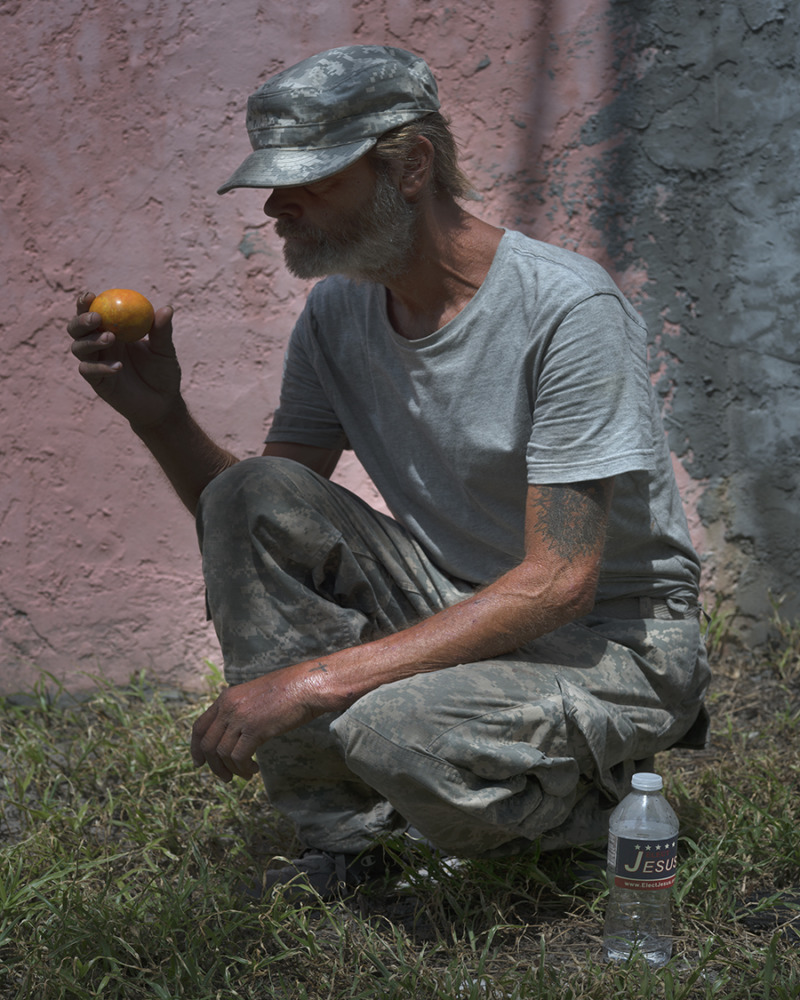
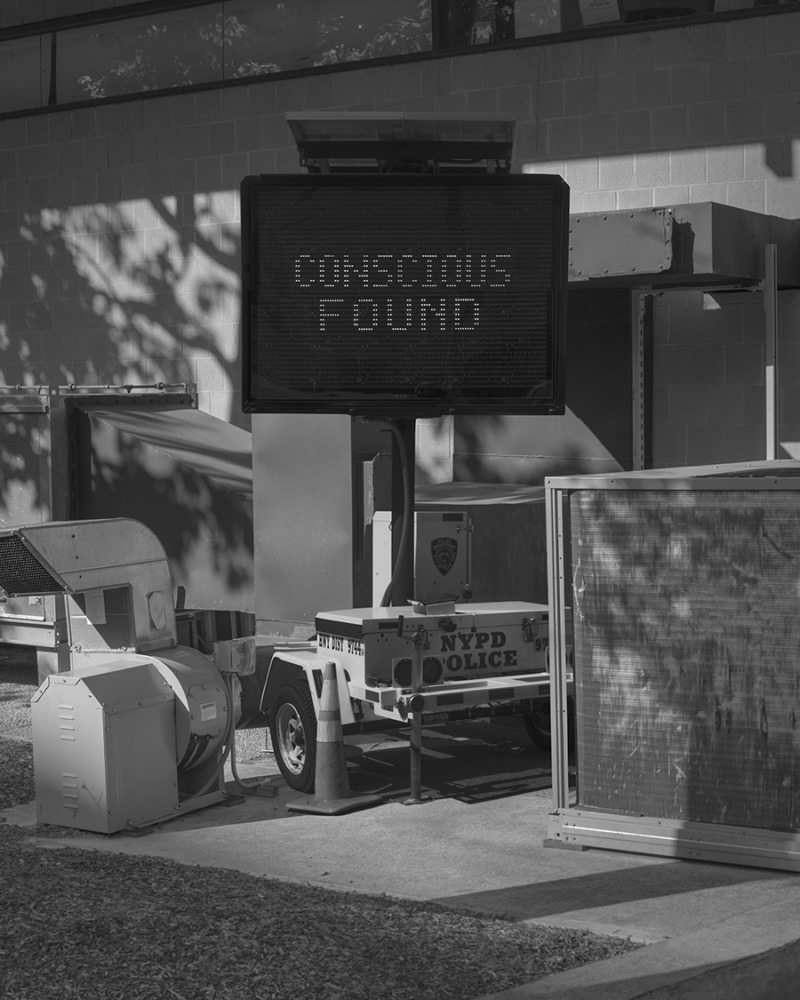
But doubt remains. I want to stress the dissociation of image and event, there is no way to tell which of the images have been fabricated and which (if any) have been captured. Trying to place these images in something resembling reality I find myself conflicted; there are several potential explanations for what I see and why. Even a photograph of two adults standing with two children isn’t necessarily that of a family. I question my basic assumptions, I find myself attempting to decypher intention, assuming trickery, looking for faults or gaps in the facade. I find myself mimicking the classic symptoms of schizophrenia.
However, I am not schizophrenic. But this brings me back to the first question: how does the theory of radical schizophrenia match the reality for those living in the crumbling American Empire. The answer is: not at all. Deleuze and Guattari’s metaphorical romanticisation of the mentally ill doesn’t reflect the experience of those diagnosed as such. It’s a fallacy that the capacity for genius or rebellion requires a degree of mental illness. All too often the person who can no longer bear ‘all that’ doesn’t evade capitalism, but rather finds themselves consumed by it: addicted, indebted, incarcerated, dead. Similarly the mentally ill are not solely responsible for the violence that plagues the US, with constant domestic abuse, hatred of minorities, endless endless shootings.
Finally, despite the wisdom of centrists, the politics of the US is not the result of mania. The election of Trump wasn’t conducted by the mad, the opioid crisis isn’t the fault of the deranged – however much it affects them – the continual denial of health care and civil rights isn’t done absent-mindedly. Even the blatantly false propaganda put out by The White House isn’t the result of a mind that cannot distinguish truth from fiction, neither is propaganda a new invention. These crises are the result of the extremely, absurdly rational, sensible, bipartisan choices that are made every day. The US has always acted without regard for the vast majority of humanity, it kills, it maims, it neglects, and it kicks those in the teeth who deign ask for help. It’s all very well minding the gap, but it’s difficult when someone pushes you into it.
